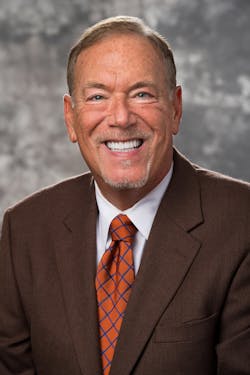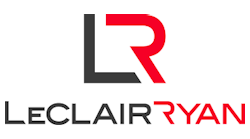U.S. airport operators and their contractors and consultants tend to be vigilant about risk-management. However, many have yet to pursue the powerful liability protections that are potentially available to them thanks to an underappreciated piece of federal legislation — the SAFETY Act of 2002.
Why would airports fail to take advantage of a law designed to protect American businesses from liability? That easy-to-remember acronym might have something to do with it.
The authors of the SAFETY Act probably started with the catchy acronym and worked backward. Keen on using the reassuring word “safety” in the uncertain wake of 9/11, lawmakers christened their bill the Support Anti-Terrorism by Fostering Effective Technologies Act of 2002 (Subtitle G of Title VII of the Homeland Security Act of 2002).
The purpose here was to protect the gamut of businesses that could be assets in the War on Terror. Imagine a startup that makes a nifty gadget for detecting plastic explosives at airports. Lawmakers understood that even if such a device were successful 99 out of 100 times, even a single failure could trigger an avalanche of lawsuits. Congress was concerned that, faced with such a “bet-the-company” level of liability risk, U.S. businesses would simply scrap plans for innovative products and services.
But use of the word “technologies” in that acronym (and throughout the statute itself) is potentially misleading. In actual practice, the protections in the SAFETY Act are available to a wide variety of aviation and non-aviation companies. Indeed, they are potentially available to any company that provides equipment, services, devices or technologies (including IT technologies) that are “designed, developed, modified, or procured for the purpose of preventing, detecting, identifying, or deterring acts of terrorism or limiting the harm from such attacks.” Of particular note here is inclusion of the term services.
Over the last year or so, federal regulators have granted SAFETY Act protection to K-2 Solutions Inc., which runs canine teams of explosive-detecting dogs; the security program (and its employees, contractors and consultants) for a 100-foot perimeter area around Little Caesars Arena in Detroit; and Universal Protection Service, a national shopping mall security company, to name a few.
Clearly, there is broad potential at airports for in-house and outsourced programs to win similar protections, so long as they meet the broad requirements listed above for SAFETY Act qualification. The tremendous upsides associated with a successful bid are worth listing in some detail. Under the highest level of protection (“Approved Product for Homeland Security”), registrants are exempt from punitive damages, exemplary damages or any other damages that go beyond compensating the victim. They also cannot be forced to pay so-called non-economic damages unless the plaintiff suffered physical harm. That means that frightened bystanders to a DHS-designated terrorist attack cannot win large sums in court for the likes of physical and emotional pain and suffering, inconvenience or what they deem to be a loss of enjoyment in their lives, post-incident. The act also provides what is known, in legalese, as “several liability only in proportion to fault,” a significant limitation on the amount of damages that multiple plaintiffs could seek in litigation.
But the potential protections under the SAFETY Act do not end there. In 1988, this attorney successfully represented Sikorsky Aircraft Corp. in the landmark U.S. Supreme Court case Boyle v. United Technologies. The case established what is known as the government contractor defense, whereby government contractors are immunized from liability under certain conditions. When DHS grants SAFETY Act protection to a particular product or service, the applicant automatically gains the ability to rely on this defense. The doctrine applies regardless of whether the product or service was provided to a government, or whether the applicant is in any way a government contractor. The idea here is that, in essence, DHS has granted government contractor status to the applicant by putting the government stamp of approval on the product or service in question. This presumption can only be overcome by evidence of fraud or willful misconduct in submitting the application and product/service to DHS.
When a company wins SAFETY Act protection for a product or service, DHS will crunch the numbers to determine how much liability insurance that company needs to carry. After that, any liability for damages resulting from a DHS-designated terrorist attack cannot exceed the limits of that liability insurance policy.
Field-testing is the only way to prove that a product or service actually works. However, in some cases, the field-testing of anti-terrorism products or services could trigger some level of liability risk for the company. In addition to the approved products designation, the SAFETY Act also provides for a more limited qualification that can be used to insulate companies from liability as they field-test, validate and develop new products or systems. While the time and scope of this designation are limited, companies can nonetheless leverage the SAFETY Act to move forward and get their products or services to market.
Without SAFETY Act protection, an airport and/or its consultants, vendors and contractors could face multiple suits in local courts. Once a product or service has won SAFETY Act protection, any litigation defaults to federal court; the act also stipulates that plaintiffs’ attorneys cannot use unique legal theories to push a case out of federal court and back into a potentially friendlier local venue. The enormously broad language in the act—words such as “arising out of, relating to or resulting from” an act of terror, also are potentially protective in ways that may not be intuitive. If an ambulance gets into an accident ferrying terror victims to a local hospital, for example, it is conceivable that the ambulance company could leverage SAFETY Act protections.
The SAFETY Act is potentially a significant risk-reduction tool for U.S. airport operators and their consultants and contractors. In contemplating which parties at the airport should explore it further, it is important to remember that all sorts of businesses could potentially leverage its protections. Recent successful SAFETY Act registrants do include the likes of Shooter Detection Systems or Rapiscan, but they also include The Atlanta Falcons Stadium Co. and The St. Louis Cardinals. U.S. airports, with their aviation infrastructure as well as shops and restaurants, contain both soft and hard terrorism targets. They should take maximum advantage of the SAFETY Act for products and services that are “designed, developed, modified, or procured for the purpose of preventing, detecting, identifying, or deterring acts of terrorism or limiting the harm from such attacks.”
Following 9/11, the whole purpose of the SAFETY Act was to encourage the development of technology and services that would help the United States protect its citizens. Back then there was a real danger that American entrepreneurialism would be stifled by excessive liability risk. The same philosophy of support carries through to today at DHS and its SAFETY Act administration office. These officials want to put the act to constructive use to help businesses—U.S. airports included—involved in protecting our populace. While applying for these protections certainly requires a significant commitment and no shortage of technical and legal paperwork, the powerful protections that can accrue from a successful application can make these efforts well worth it, and then some. More info is available at safetyact.gov.
Veteran aviation attorney Mark A. Dombroff is an Alexandria, Va.-based member of LeClairRyan and co-leader of the national law firm’s aviation industry practice; [email protected].





